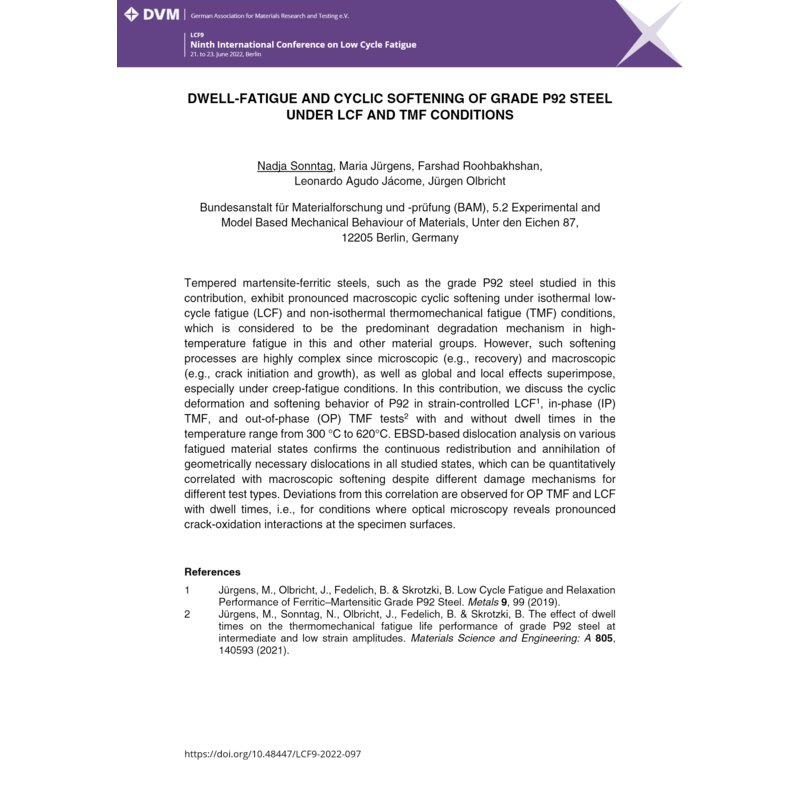- Online only



Tempered martensite-ferritic steels, such as the grade P92 steel studied in this contribution, exhibit pronounced macroscopic cyclic softening under isothermal low-cycle fatigue (LCF) and non-isothermal thermomechanical fatigue (TMF) conditions, which is considered to be the predominant degradation mechanism in high-temperature fatigue in this and other material groups. However, such softening processes are highly complex since microscopic (e.g., recovery) and macroscopic (e.g., crack initiation and growth), as well as global and local effects superimpose, especially under creep-fatigue conditions. In this contribution, we discuss the cyclic deformation and softening behavior of P92 in strain-controlled LCF, in-phase (IP) TMF, and out-of-phase (OP) TMF tests with and without dwell…

Datenschutzbedingungen (bearbeiten im Modul "Kundenvorteile")

Lieferbedingungen (bearbeiten im Modul "Kundenvorteile")

Rücksendebedingungen (bearbeiten im Modul "Kundenvorteile")
Tempered martensite-ferritic steels, such as the grade P92 steel studied in this contribution, exhibit pronounced macroscopic cyclic softening under isothermal low-cycle fatigue (LCF) and non-isothermal thermomechanical fatigue (TMF) conditions, which is considered to be the predominant degradation mechanism in high-temperature fatigue in this and other material groups. However, such softening processes are highly complex since microscopic (e.g., recovery) and macroscopic (e.g., crack initiation and growth), as well as global and local effects superimpose, especially under creep-fatigue conditions. In this contribution, we discuss the cyclic deformation and softening behavior of P92 in strain-controlled LCF, in-phase (IP) TMF, and out-of-phase (OP) TMF tests with and without dwell times in the temperature range from 300 °C to 620°C. EBSD-based dislocation analysis on various fatigued material states confirms the continuous redistribution and annihilation of geometrically necessary dislocations in all studied states, which can be quantitatively correlated with macroscopic softening despite different damage mechanisms for different test types. Deviations from this correlation are observed for OP TMF and LCF with dwell times, i.e., for conditions where optical microscopy reveals pronounced crack-oxidation interactions at the specimen surfaces.